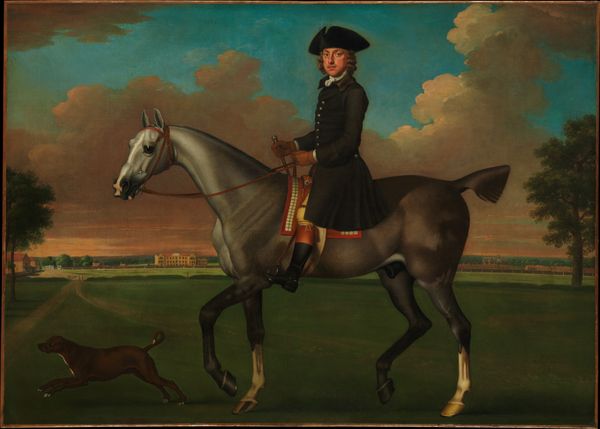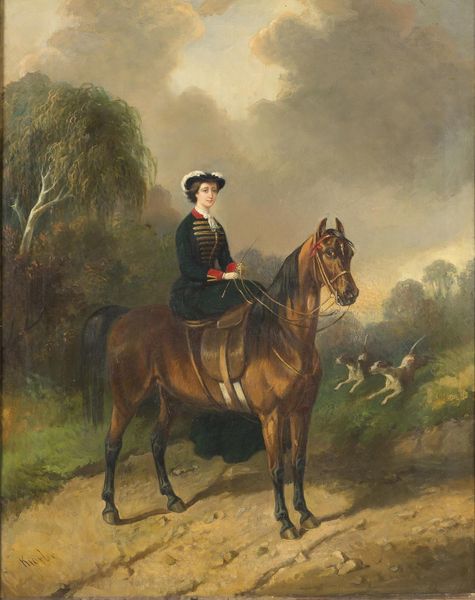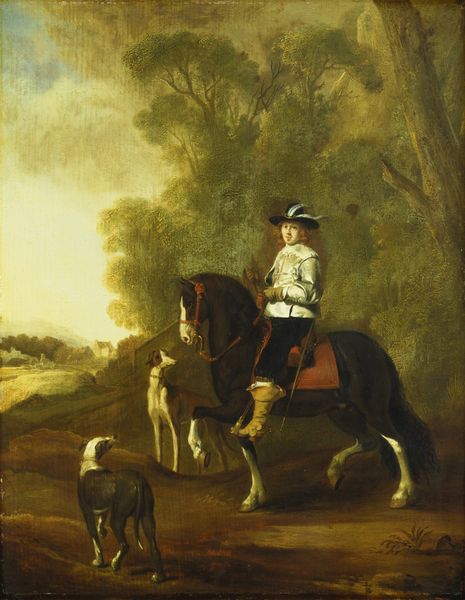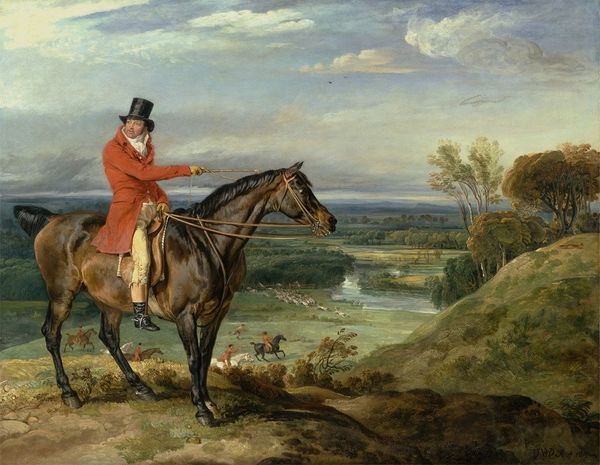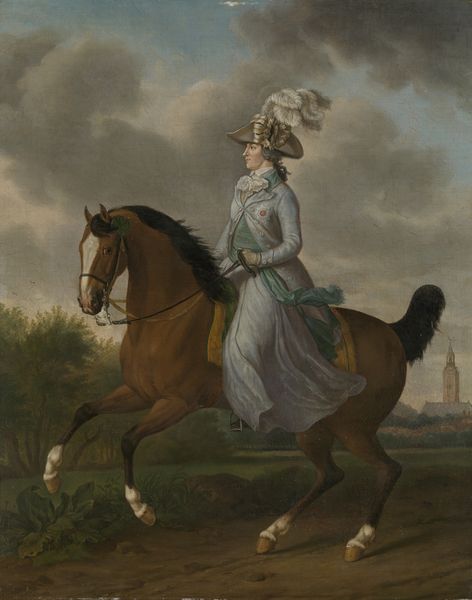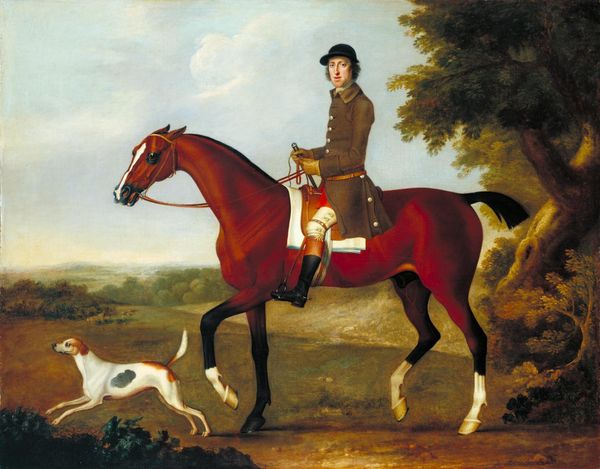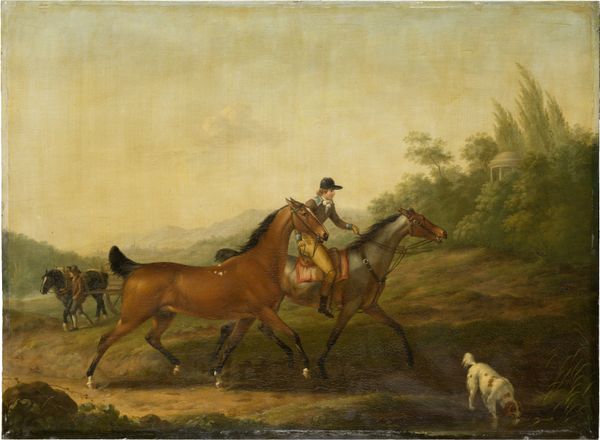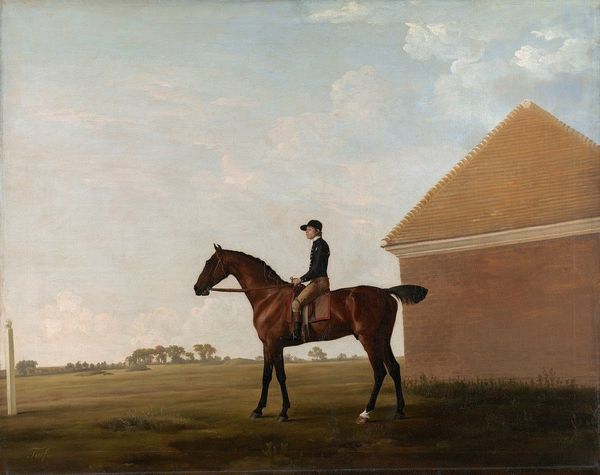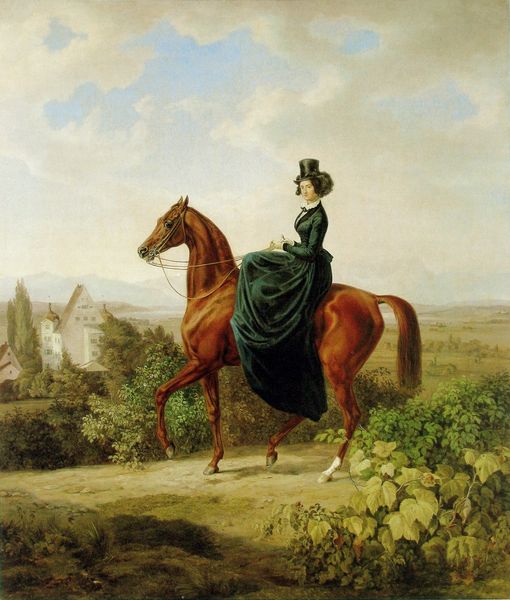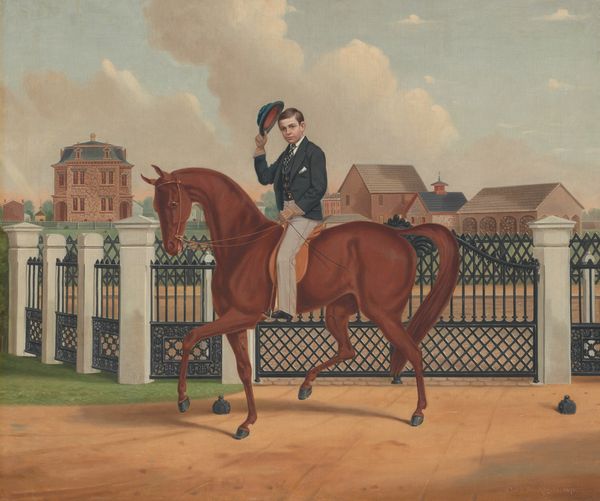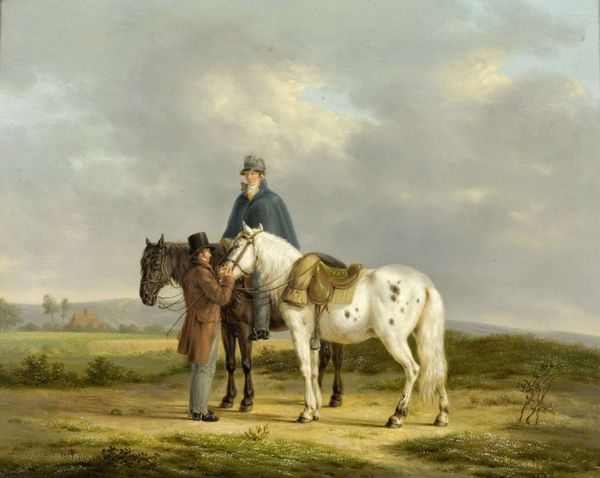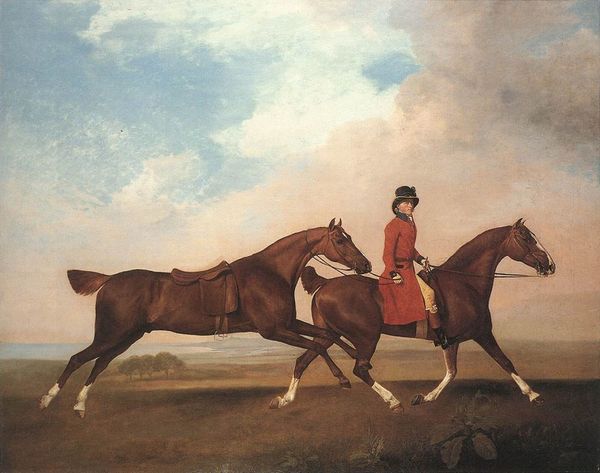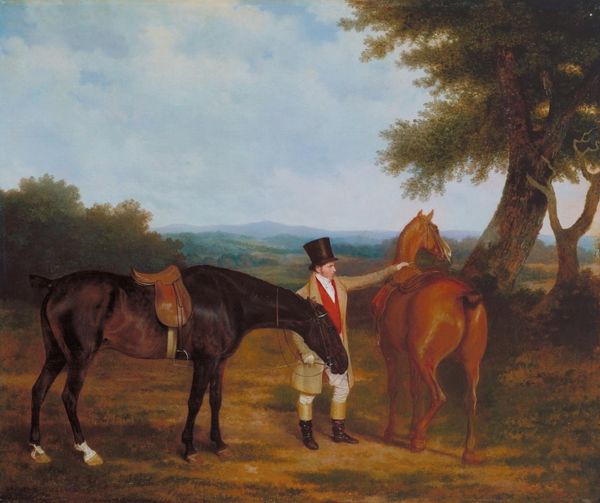
painting, oil-paint
#
portrait
#
painting
#
oil-paint
#
landscape
#
genre-painting
#
rococo
Copyright: Public Domain: Artvee
Editor: So, here we have George Stubbs' "The Countess of Coningsby in the Costume of the Charlton Hunt," from around 1760, made with oil paint. I’m struck by how posed and formal it feels, but the vast landscape hints at something wilder. What story do you think this painting is telling? Curator: This piece really speaks to the complex relationship between aristocracy and the English countryside. Stubbs wasn’t just painting a portrait; he was crafting an image that communicated social status, power, and connection to the land. Note the deliberate display of leisure – hunting wasn’t merely a sport; it was a carefully constructed performance. Editor: I see that. It's like she's deliberately placed in this specific environment. Was the Charlton Hunt significant? Curator: Absolutely. It was one of the most prestigious hunts in England. Being associated with it elevated one’s social standing. Stubbs understands the nuances of how these institutions helped shape the public image of the elite. What do you think her opulent riding costume says about that? Editor: It emphasizes the privilege, right? The vibrant blue, the elaborate trim - it sets her apart from the ordinary. It's fascinating how Stubbs uses the portrait to not only depict the Countess but to make a broader statement about social stratification. I hadn't considered how carefully constructed her public persona would be. Curator: Exactly. Stubbs captures the aspirations and self-presentation of the British upper class in the 18th century. Art as social commentary, even then! Editor: That definitely shifts how I see portraits now. I'm thinking about what each element reveals about the sitter’s place in society. Thanks!
